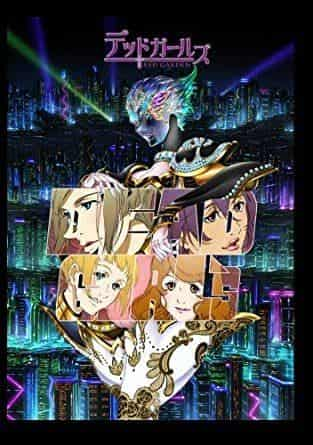The appeal and reviews of "The Story of Little Rabbit": A thorough analysis of this moving story

"The Story of Little Rabbit": A Historical Masterpiece of Japanese Animation■ Public Mediatheater ■ Original MediaAnime Original ■ Release dateMarch 1954 ■ Number of EpisodesEpisode 1 ■ Director・Direction: Koji Mori ■ ProductionProduced by Nichido Films, Sanae Yamamoto ■ StoryIn a forest, a mother rabbit and her two baby rabbits live. The mother rabbit teaches her baby rabbits how to live. The older rabbit follows his teachings well, but the mischievous younger rabbit never listens to his mother's advice. An evil fox in the forest targets the baby rabbits whenever he gets the chance. One day, the baby rabbits are caught off guard and are suddenly attacked. They try to escape, but at the last moment, the mother rabbit saves them. Source: History of Japanese Animation Films ■ExplanationAlthough it is heavily influenced by Disney's "Bambi," it is a wonderful full-length animation, and it's a shame that it wasn't in black and white. Source: History of Japanese Animation Films ■ Main staff・Produced by: Nichido Eiga, Yamamoto Sanae・Screenplay: Yabushita Yasuji・Directed by: Mori Koji・Key animation: Mori Koji・Animation cooperation: Furusawa Hideo・Animation: Naganuma Sumiko, Wakamatsu Hajime, Okada Yayoi・Background: Nakajima Kiyoshi・Cinematography: Takagi Taisaku, Ishikawa Mitsuaki・Music: Sakamoto Yoshitaka・Singer: Saegusa Kimiko・Commentary: Kato Sachiko・Sound recording: Muneta Kaneya・Sound effects: EF Group The historical background and behind-the-scenes story of "The Little Rabbit""The Story of Little Rabbit" is a Japanese animated film released in 1954, and by understanding the historical context, the value of this work can be better understood. Japan was still in the process of recovery after the war, and the entertainment industry was also gradually getting back on its feet. Produced by Nichido Film Company, this film symbolized the technology and artistry of Japanese animation at the time, and moved many audiences. Director Mori Koji is a veteran who has been active in the world of animation since before the war, and his experience and technique have contributed greatly to this work. In particular, even though it is a black and white film, the characters' expressions and movements are carefully designed, making it visually appealing. In addition, screenwriter Yabushita Yasushi skillfully portrayed the development of the story and the growth of the characters, capturing the hearts of the audience. An interesting behind-the-scenes story is the presence of Nakajima Kiyoshi, who was in charge of background art. He was also known as a pre-war Japanese painter, and his beautiful background paintings played an important role in enhancing the overall atmosphere of the film. Additionally, the beautiful melodies of Sakamoto Yoshitaka, who was in charge of the music, further enhanced the moving impact of the story. Furthermore, Saegusa Kimiko's singing voice was a notable presence in the Japanese film industry at the time, and her singing ability was one of the factors that added to the appeal of the film. Story and character analysis of "The Little Rabbit Story"The story of "The Tale of the Little Rabbits" begins with a mother rabbit and her two little rabbits living their daily lives in the forest. The mother rabbit teaches her little rabbits how to live, and the older rabbit in particular closely follows her teachings. However, the younger rabbit is mischievous and often does not listen to his mother's teachings, creating tension in the story. In a scene where an evil forest fox targets the little rabbits, the audience is drawn into the story as they worry about the fate of the little rabbits. The climax, in which the mother rabbit saves the little rabbits from peril, deeply moves the audience. In terms of character analysis, the mother rabbit is portrayed as a loving individual who does her best to protect her babies. The older rabbit has a strong sense of responsibility, and it is impressive to see how he grows by following his mother's teachings. On the other hand, the younger rabbit is free-spirited, and his growth is fueled by taking risks. The evil fox plays an important role in increasing the tension in the story, and its presence is what encourages the growth of the babies. Animation technique and artistry of "The Tale of the Little Rabbit"Although "The Story of Little Rabbit" is a black-and-white film, it has been highly praised for its animation technique and artistry. In particular, the depiction of the characters' movements and expressions is extremely realistic, encouraging the audience to empathize with the characters. The beauty of the background art is also noteworthy, with the forest scenery being depicted realistically. These technical elements further enhance the moving impact of the story. Furthermore, the use of music and song is also an important element in enhancing the artistic quality of the work. Yoshitaka Sakamoto's beautiful melodies and Kimiko Saegusa's singing voice deepen the moving story and have the effect of soothing the audience's hearts. The combination of these elements has made "The Story of Little Rabbit" a masterpiece that will remain in the history of Japanese animation films. The influence and evaluation of "The Story of the Little Rabbit""The Tale of the Little Rabbit" was highly praised when it was released, and its influence continues to this day. It is especially highly regarded for the fact that, while it was influenced by Disney's "Bambi," it was produced using uniquely Japanese sensibility and technology. Even though it is a black-and-white film, its artistry and moving storyline captured the hearts of audiences, and it was loved by many people. This work occupies an important place in the history of Japanese animation films, and has had a great influence on later generations of animation artists. In particular, the way it depicts character growth and family love has had a huge influence on later Japanese animation works. In addition, its pursuit of beauty and artistry in black-and-white film has also shown modern animation artists new possibilities. Recommendations and how to watch "The Story of Little Rabbit""The Story of Little Rabbit" is an essential work for understanding the history of Japanese animation films, and a beautiful work that depicts a story of family love and growth. It is a work that can be particularly recommended for a wide range of generations, from children to adults, and you can share the excitement by watching it together with your family. It is also recommended for those who want to enjoy the beauty of black-and-white films. Currently, you can purchase it on DVD or Blu-ray. It is also screened at some movie theaters and animation film festivals, so if you have the chance, please watch it on the big screen. It is also sometimes distributed online, so that is another way to watch it. Conclusion"The Story of Little Rabbit" is a masterpiece that will remain in the history of Japanese animation films, and its artistic quality and moving story are still loved by many people today. It is a beautiful work that depicts a story of family love and growth, and is a work that can be recommended to a wide range of generations. Please rediscover the charm of Japanese animation through this work. |
<<: Review of "Kappakawa Taro": Charming characters and deep story
Recommend
"Yondu" Michael Rooker: There's no chance of me returning to "Guardians of the Galaxy 3" by playing another role
Michael Rooker's role as "Yondu" in...
Goro's Food Tour! The Lonely Gourmet Season 8 will be aired in October
According to the latest official news, "The ...
A thorough review of the touching story of Hello Kitty and the duck Pekkle from Sanrio's World Masterpiece Theater!
Sanrio World Masterpiece Theater Hello Kitty'...
The full cast of the American TV series "Star Wars: The Mandalorian" is revealed
According to the official website of "Star W...
Official trailer for Season 2 of Invincible Youngsters released
The first four episodes of the second season of t...
The high-scoring thriller-adventure film "Falling" will be released nationwide on November 18
Today (November 10), the thriller adventure film ...
Fujiko F. Fujio's SF masterpiece "33,000 Square Meters" is released in the Japanese drama, starring Koichi Yamadera
The Japanese drama of the same name, adapted from...
New stills of Jurassic World 3 show the arrival of the new dinosaur Giga
"Jurassic World 3" released new stills,...
The appeal and evaluation of Saint Tail: New possibilities for girl heroes
Saint Tail: The Story of the Magnificent Thief an...
The sequel to the famous animation "Zoo Idol Saga" was released on January 1st.
The sequel to the classic anime "Zoo Idol 2:...
"Frozen 2" new TV trailer Elsa shows off her cool moves by the lake
Today (October 22), Disney released a new TV trai...
Detailed review and evaluation of FAIRY TAIL series TV version #1
Fairy Tail: A magical world of friendship and adv...
The live-action movie of Jian Wang 3 is coming soon. Poster of "Swordsman Love: The Legend of Shenzhou"
Today (August 3), Tencent Film officially release...
Super Dimension Century Orguss: A review of the fascinating mecha design and profound story
Super Dimension Century Orguss ■ Public Media TV ...
Kirby anime will be released in Blu-ray HD remastered version this winter
To commemorate the 30th anniversary of the Kirby ...









